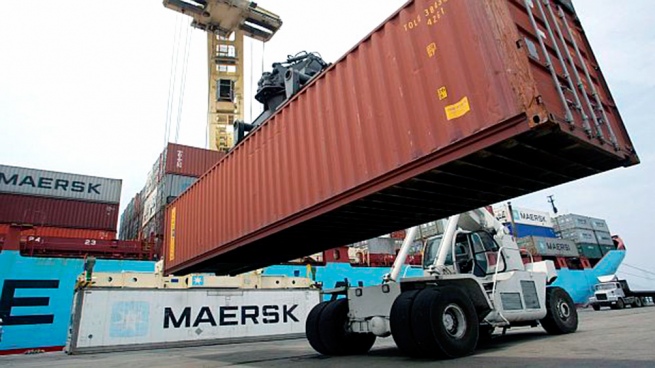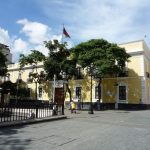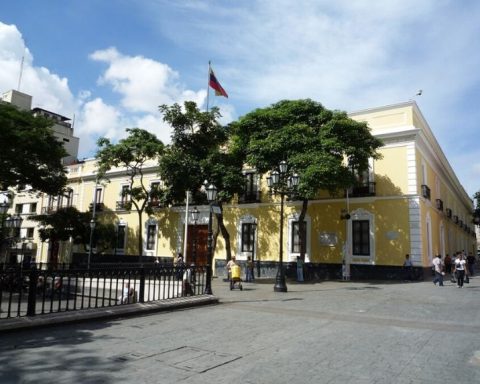Argentina had in 2021 the third best exporting year in historyto the reach a total of US$ 77,934 millionwith an increase in values of 42% compared to 2020 and 20% compared to 2019, which is only surpassed by 2011 -a record year- and 2012, the National Institute of Statistics and Census published this Thursday (Indec).
The report indicated that the quantities exported increased 12.9% year-on-year, thus reaching the level of 2010, in an export complex that, except for fuel and energy -due to greater local demand-, all major items exceeded their export levels of 2020 and 2019.
Manufactures of industrial origin were those with the highest growth (32.9%) and accumulated four quarters of uninterrupted increases. The quantities of manufactures of agricultural origin (11.7%) and primary products (5.4%) also grew.
#DatoINDEC
Foreign trade: export and import prices increased 26% and 20.1% year-on-year in the 4th quarter of 2021, respectively. The exported quantities grew 22.6%, and the imported ones, 19.3% https://t.co/E3xLuJe0wY pic.twitter.com/Ehpaa2EZeC— INDEC Argentina (@INDECArgentina) February 3, 2022
At the sub-item level, the largest increases in quantities were: cereals (12.3%); waste and waste from the food industry (20.4%); fats and oils (11.3%); land transport equipment (68.1%); related chemicals (24.9%); stones, precious metals and articles thereof, coins (18.2%); and common metals and their manufactures (7.9%).
Imported quantities rose again after 3 consecutive years of falls in 2018, 2019 and 2020driven by the improvement of productive investment.
After making known the figures of the Indec of the Index of prices and quantities of foreign trade, the Foreign Ministry highlighted that “the level of export of goods was on the podium of the three best years in history, driven by both prices and quantities. “.
Argentine exports continue to grow!
? 2021 was the 3rd best exporting year, with a total of USD 77,934 million, only surpassed by 2011 (record year) and 2012. pic.twitter.com/HPf5uYrzF5
– Argentine Foreign Ministry ?? (@CancilleriaARG) February 3, 2022
In this regard, it was highlighted that inputs and capital goods and their parts gained weight in the profile of imports, which together account for 80% of imports.
“The quantity and profile of imports reveal a process of import substitution in many branches (automotive, agricultural machinery, white goods, textiles, footwear, etc.), which explains an important part of the improvement in the industry as a whole” , was highlighted.
In the case of the automotive sector, of the total number of patented cars in 2021, 60% were national cars (compared to 30% in 2019), and in 2021 Argentine automotive production was the one with the greatest recovery worldwide in relation to to 2019 (38.1%).
“The improvement in the terms of trade index, which registered a positive year-on-year variation of 9.7% in 2021, contributes to the sustainability of the import substitution process,” it was explained this afternoon.
The international prices also impact imports and the fourth quarter of 2021 grew 43.3% compared to the same period of the previous year, driven mainly by prices (20.1%) and, to a lesser extent, by quantities (19.3%).
In particular, since May there has been an acceleration in import prices with two-digit rates, averaging 20.2% growth.
The impulse of prices above quantities is contrary to the long-term trend, particularly present in capital goods and their parts and pieces and in consumer goods.
In this sense, it was explained that ´”to find a period of similar high growth and sustained for several months, we must go back to 2009, with the upward cycle of fuel and commodity prices and, even so, the growth of said period was not as high as the current one.
The year ended with a growth in prices lower than quantities, 14.7% for the former and 30.1% for the latter.
The Foreign Ministry under Minister Santiago Cafiero highlighted that the results obtained reflect the work carried out within the framework of the Public-Private Council for the Promotion of Exports, which has the participation of around 300 chambers and entities linked to foreign trade.
Likewise, the Argentine Foreign Ministry accompanied exporters throughout 2021 through numerous trade promotion actions in different foreign markets and presented the Export Plan for Development 2022, which stimulates a package of policies and tools for generating export capabilities, lines of financing and technical assistance.
Last week in an interview with Télam, the Minister of Productive Development, Matías Kulfas, assured that exports “were accompanied by international prices, quantities also grew” and also valued that there was a “good scenario” in the imports, with respect to their composition.
“We saw growth focused fundamentally on inputs and capital goods, allocating relatively less final product and more inputs to produce in Argentina, so this is also good news,” the minister said.

















